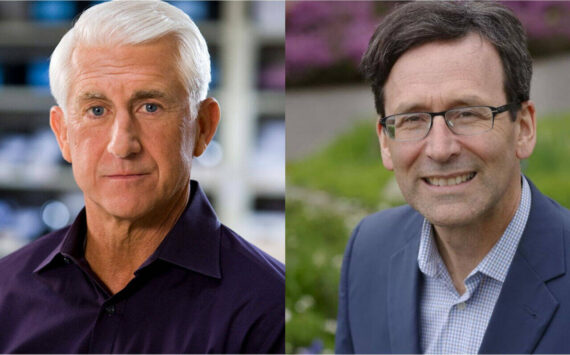By Morf Morford, Tacoma Daily Index
The term “best practices” has always bothered me.
I’m not sure why exactly.
It might be the magical thinking that presumes that, if we just had the perfectly applied and proven formula, we wouldn’t have any problems.
Or it might be that “best” practices, like “good” or “relatively” or even “occasionally effective” practices are maddeningly undefinable and, at best, imprecise.
What, after all, in the name of all that is business jargon, do those words even mean?
Many eons ago, when I was in a biology class, the teacher pointed out that every human-made object showed more disorganization the closer one looked, while any object from nature, a leaf or speck of sand, for example, showed more detail and more organization, the closer one looked.
The same is all too often true of business jargon – the closer one looks, the less meaning one often finds.
Best practice then, in most contexts, refers to a technique or methodology that, through experience and research, has proven to lead to the desired result reliably.
Or at least better than any other technology, method or process. Most of the time. In most situations. With most people.
And, again, like some magic spell cast over a problem or circumstance, the phrase “Best Practice” implies or suggests that there is a technique, method, process, activity, incentive or reward that is more effective at delivering a particular outcome than any other.
“Best” implies that research has been carried out and a full investigation and analysis has taken place, and that the “practice” (along with any preferred result) is reliable, if not determined.
Anyone know of an office, department, business, government agency, or even family, where this is true?
One best practice to rule them all
The core assumption of “best practices” is that every problem, situation or circumstance has its key – its never-fail solution in the form of a one-size-fits-all formula.
Like some stone tablets from the hand of a deity, those words are used to describe the process of developing and following a standard way of doing things that multiple organizations can use for management, policy and governance.
And all it would take is for those benighted nitwits to get with the program and everything would go smoothly from now on.
My bias is that dogma, especially self-righteous dogma, in business or religion, is rarely, if ever effective. At least not for long.
Situations, relationships, personnel, even moods and energy levels shift continually.
Any business deal is a melange of continually moving parts.
Any contract is a snapshot of expectations and assumptions that might (and in most cases will) change the next day.
Where has “best practices” gotten us?
The term “best practices” became widespread in the teen years of the 21st Century.
You’d be forgiven for imagining that, with several years of “best practices” in place, if not practice, that we, in the early 2020s wouldn’t have any problems in the economy, culture or global political climate.
Is this the “best” we can do?
If you look over a list of what constitutes “best practices” you might be surprised at how low the bar might be that purports to be “best”.
Here are a few examples from a prominent management website;
Communicate Well; Make sure to communicate in a way that clearly outlines your expectations for your employees. Allow them to ask clarifying questions, and field those questions with patience.
Engage Workers: Present your company’s vision in a way that compels employees to get on board. Everyone wants to feel like they’re serving something bigger than themselves.
Delegate Tasks: Managers don’t have time to do everything. Delegating saves time and enables your team to develop their skills.
Lead by Example: One of the fastest ways to lose the respect of your employees is to ask them to do things you yourself aren’t doing. As a manager, you model what kind of behavior is desirable in the workplace.
There are several more.
But I have one question; didn’t every good teacher know all of these intuitively?
Didn’t every great teacher/philosopher/prophet/leader incorporate each one of these for the past several thousand years? In every culture and setting?
Far from the “best”, I’d consider these as the bare minimum, the essential organizational foundation of any entity from family to neighborhood to global corporation.
These are the bare bones, the structural skeletons of any shared human endeavor from warfare to pyramids.
Who didn’t know these?
And then I remember the doltish, pointy-haired, clueless manager of Dilbert. That model of leadership portrayed in cartoon form, was taken from life experience, and has been all-too-present in my career track.
What the high-priced consultants call “best practices” is, in virtually every case, just basic honesty, decency and mutual respect.
And yes, it’s true that those basic components are rare enough in business and politics to warrant special “trainings” and in-services to remind some of us to behave like decent human beings – and, of course show respect and pay workers fairly.
What we call “best practices” should be the starting point, not the lofty, abstract and distant aspirational goal. They should be who we are every day.
The “best”can always be improved.
The “bottom line” in business is usually considered as the final word, the obligating, legally binding terms, but the true “bottom line” is in fact the base, the foundation and origin of everything.
The real “bottom line” is that none of us will accomplish anything unless we incorporate these most basic of the basics into our everyday character and relationships.






